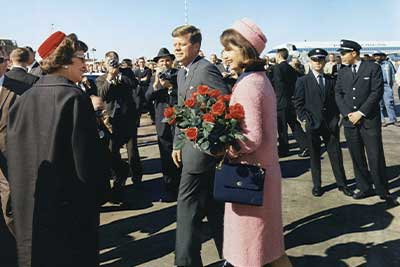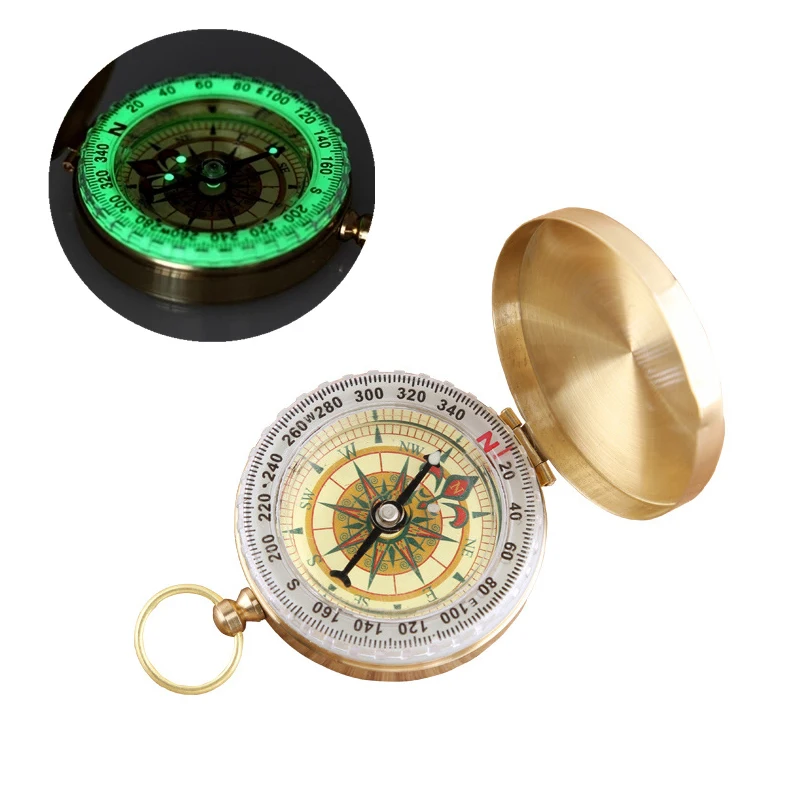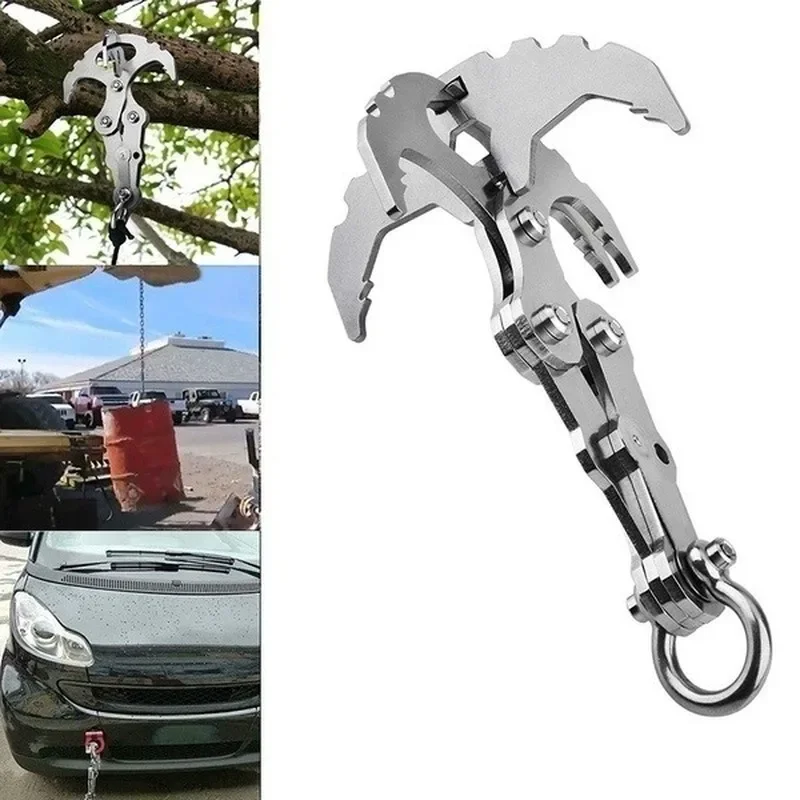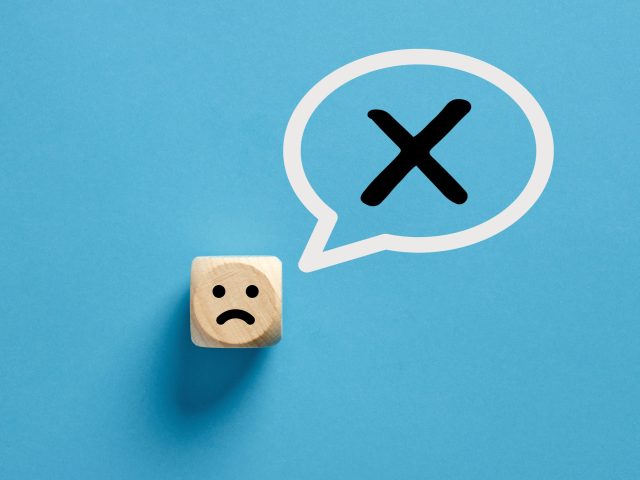Remembering President John F. Kennedy: May 29, 1917 – November 22, 1963.
“From Dallas, Texas,” a solemn Walter Cronkite announced on CBS News, “the flash apparently official, President Kennedy died at 1 p.m. Central Standard Time — 2 o’clock Eastern Standard Time — some 38 minutes ago.”
This announcement rocked America and the entire globe on November 22, 1963.
Although most people could not put their finger on it, there was a general sense that something profound — more profound than the murder of a popular president — had occurred. In the days, weeks, and months that subsequently passed, this sentiment progressively materialized. America witnessed its first televised murder when Jack Ruby shot and killed the only suspect ever named in the Kennedy assassination — Lee Harvey Oswald.
A commission was hastily put together to investigate and posthumously convict Oswald. U.S. involvement in Vietnam rapidly increased. The profits and power of the military-industrial complex soared, and Kennedy’s brother Robert was assassinated in California while running for the U.S. presidency on an anti-war platform. Throughout this tumultuous and chaotic period, there was one group of powerful actors who never seemed concerned and who always seemed to benefit. They have gone by a variety of names in the past, but today we know them as the Deep State.
It is this group of politicians, bureaucrats, operatives, influencers, and power brokers who had the motive, means, and opportunity not only to assassinate a sitting president, but to cover it up for the next 60 years. Once we understand who these people are, the power they wield, their motivations, and their ultimate goals, we begin to develop a lens that brings the situation into clear focus. With this lens, we are prompted to ask new questions, such as “why” JFK was killed, rather than “who” was physically behind the gun.
When we consider this in light of an insider conspiracy, rather than the action of an isolated, down-on-his-luck malcontent with a cheap Italian carbine, we refine our understanding of the forces responsible for Kennedy’s death, and develop a new motivation to seize the levers of power from the authoritarian hands of the Deep State. By doing so, we can make something good come from this tragedy and regain some semblance of our self-governing, liberty-loving, constitutionally limited representative republic.
What Is the Deep State?
In recent years, the term “Deep State” has become popular in the United States to describe the shadowy forces behind the scenes seeking to manipulate American government, primarily, but also other sectors of society. Typically, those who use the term are referring to unelected bureaucrats, intelligence agencies, and others within the “permanent government.”
The Deep State as it has become known today cannot be understood properly by merely considering it to be a stand-alone entity. As the late Georgetown University Professor Carroll Quigley explained in his book Tragedy and Hope, it operates alongside of and collaborates with international communism. This is a critical facet of mid-century American politics that bears directly and heavily upon the murder in Dallas in 1963. Indeed, no less than former Congressman Martin Dies of Texas, who served for seven years as chairman of the House Committee on Un-American Activities, attributed the assassination of the president to the communist infiltration of the United States that had long been ignored, covered up, and even encouraged by its allies and fellow travelers within the Deep State. Many presidential administrations, up to and including Kennedy’s own, failed to confront the threat of internal communist subversion, Dies wrote in 1964 for American Opinion magazine — a predecessor of The New American. “There were strong political reasons why these Administrations failed to proceed vigorously against Communists in this country,” Dies wrote. “But the point is that constant ‘Liberal’ failure to even so much as acknowledge the existence of an internal Communist threat resulted in the assassination of President Kennedy.”
The question is why the communist-Deep State axis would want to kill the president. After all, Kennedy seemingly was acting in alignment with their goals, generally speaking. He was himself a liberal with internationalist tendencies. And yet, a closer examination reveals that, despite appearances, to both the communists and the Deep State alike, Kennedy was a wild card and his assassination would end the threat he posed to their operations while simultaneously serving as a means to both sow fear and discord among the American people and discredit conservative and anti-communist opposition to the subversion of the country. Ultimately, as you will see, President Kennedy simply stood in their way.

Fear and Loathing of President Kennedy
If Kennedy was indeed a threat to the leftist Deep State-communist program, then some evidence of the fact that he was perceived as such should have been clear. In fact, at least one significant observer of political affairs at that time noticed just such a fear of and disdain for Kennedy among leftists at the time.
The observer who noticed this was none other than celebrated bestselling novelist Taylor Caldwell. Perhaps not well-known today, by the time of Kennedy’s election Caldwell — a pen name — had already written 22 novels, among them many bestsellers. Her first, Dynasty of Death, appeared in 1938 and was, according to the Los Angeles Times, “a blockbuster in the stores.” She was also a conservative and, as the Kennedy presidency moved toward tragedy, became more and more worried about what might happen to the president. Just three weeks before Dallas she wrote of her fears in the Catholic newspaper The Wanderer.
“The enemies of freedom and God are everywhere in every country of the West,” Caldwell wrote. “It is possible that Mr. Kennedy is in personal jeopardy from them, a matter which is not being mentioned in the newspapers. Indeed, it is very probable. Presidents have been murdered before in our history and in less dreadful times.”
She went on to explain the reasons for her fear. “I receive quite a number of pro-Communist and ‘Liberal’ periodicals, and some are quite inflammatory against Mr. Kennedy. The tone of the ‘liberal’ periodicals — some of our big monthly magazines, for instance — [is] wrathful against our President. It seems that they had expected him to overthrow the Constitution and set up a sort of crypto-Communist dictatorship. (They call it ‘progress.’) He has disappointed them.”
Kennedy didn’t take long to put the communist-Deep State conspiracy on notice. Just a few months after taking office, he delivered one of the most important speeches ever given by an American president.
On April 27, 1961 at the Waldorf-Astoria Hotel in New York City, Kennedy delivered a speech titled “The President and The Press: Address Before the American Newspaper Publishers Association.” In that speech, JFK in no uncertain terms condemned both secret societies and the communist conspiracy of which they were a part:
The very word “secrecy” is repugnant in a free and open society; and we are as a people inherently and historically opposed to secret societies, to secret oaths and to secret proceedings. We decided long ago that the dangers of excessive and unwarranted concealment of pertinent facts far outweighed the dangers which are cited to justify it. Even today, there is little value in opposing the threat of a closed society by imitating its arbitrary restrictions. Even today, there is little value in ensuring the survival of our nation if our traditions do not survive with it…. For we are opposed around the world by a monolithic and ruthless conspiracy that relies primarily on covert means for expanding its sphere of influence — on infiltration instead of invasion, on subversion instead of elections, on intimidation instead of free choice, on guerrillas by night instead of armies by day. It is a system which has conscripted vast human and material resources into the building of a tightly knit, highly efficient machine that combines military, diplomatic, intelligence, economic, scientific and political operations. Its preparations are concealed, not published. Its mistakes are buried, not headlined. Its dissenters are silenced, not praised. No expenditure is questioned, no rumor is printed, no secret is revealed. It conducts the Cold War, in short, with a war-time discipline no democracy would ever hope or wish to match.
Kennedy’s hardline statements condemning secret societies, bureaucracy, and corruption certainly would not have sat well with the Deep State actors whose ways and means were perfectly described by the president. His words resonate more today than ever before.
Many American presidents and politicians have a background of attending or holding membership in such secret societies. William Taft, George H.W. Bush, George W. Bush, and John Kerry were members of the infamous Skull and Bones society based out of Yale University.
Theodore Roosevelt, Richard Nixon, Gerald Ford, Henry Kissinger, Nelson Rockefeller, and even, most recently, Kevin McCarthy, along with 2,500 powerful CEOs, heads of intelligence agencies, media titans, and elites have attended the Bohemian Grove, a private men’s club in Monte Rio, California, that meets in the woods and conducts rituals in front of a 40-foot-tall statue of an owl.
Even Earl Warren, the 14th U.S. Supreme Court chief justice and head of Lyndon B. Johnson’s Warren Commission that investigated JFK’s assassination, attended the nefarious Bohemian Grove.
Certainly, Kennedy’s rhetoric condemning such societies would have rubbed the establishment the wrong way.
This speech most certainly would have hit home hardest with the “secret society” operating most closely to him within the federal apparatus: the intelligence community centered on the Central Intelligence Agency. In fact, Kennedy was already at war with the CIA when he delivered his remarks at the Waldorf-Astoria in what some have described as the speech that led to his assassination.
Dissolution of the CIA
The CIA would not have missed the words in Kennedy’s speech that applied as equally to them as they did to the international communist conspiracy writ large. His references to “covert means” of operation, to “infiltration instead of invasion,” and to “subversion instead of elections” would have been taken to be direct references to recent CIA operations — which, in fact, they were. But the crosshairs of the president fell most directly on the CIA when he referenced the use of “guerrillas by night instead of armies by day.” No one in the Deep State’s intelligence apparatus would have missed this direct rhetorical reference to and attack on the Bay of Pigs fiasco that had occurred just the week before Kennedy delivered his remarks.
The CIA was on a collision course with Kennedy long before “Camelot” was ever imagined. From its very founding, the organization was corrupted by the inclusion of both communist and National Socialist operatives. The latter were represented by elements sourced via the intelligence community’s very own version of “Operation Paperclip.” That operation saw America import Nazi scientists into U.S. operations ostensibly to keep them out of the hands of the Kremlin after the fall of Nazi Germany. For the secretive intelligence community, this meant the adoption of assets sourced from Foreign Armies East, the German eastern European military intelligence operation run by spymaster and General Reinhard Gehlen and known as the “Gehlen Org.” It was directed by the CIA, formed the core of NATO’s intelligence operation, and became the foundation of the West German intelligence agency. It was also, by most accounts, deeply infiltrated by communists directed by Moscow.
So, it seems, was the CIA, which itself traced its origins to World War II and the Office of Strategic Services. The OSS, created and run by William “Wild Bill” Donovan, was filled with communists. In a letter to the editor of The Washington Post regarding charges of infiltration of the OSS, Charles Pinck, the OSS society president, said, “The OSS was not infiltrated by communists during the war; it hired them.”
The degree to which the organization was infiltrated was noted by Robert Novak in a review of the book The Venona Secrets: Exposing Soviet Espionage and America’s Traitors. Writing in The Weekly Standard in 2000, Novak noted, “Perhaps the most startling revelation is the thorough Soviet penetration of Wild Bill Donovan’s Office of Strategic Services, forerunner to the CIA. Maurice Halperin, chief of the Latin American division, was an NKVD agent. So was Duncan Lee, Donovan’s assistant.” Halperin went on to become an advisor to Secretary of State Dean Acheson, and later became an advisor to the UN at the San Francisco conference where communist spy Alger Hiss served as secretary-general.
The OSS was dissolved one month after World War II ended. The CIA assumed its responsibilities, and many OSS holdovers were still loyal to the communists. Moreover, the CIA was infiltrated by Deep State globalists, working with the communists, and Kennedy was catching on. These included high-profile agent Cord Meyer, who had long had idealistic goals for the creation of a world government, which he shared with his wife, Mary Pinchot Meyer. Later, after her divorce from Cord, Mary — who publicly was friends with Jackie Kennedy — would have an affair with President Kennedy. Her intimacies and perhaps other significant details of Kennedy’s secret life were recorded in her diary, which, as documented by Peter Janney — the son of another CIA agent — disappeared into the hands of the CIA immediately after she was herself assassinated on October 12, 1964.
Clearly there was a great deal of public and private intrigue and animosity between the communist conspiracy, the Deep State and its intelligence assets, and the president, and it was quickly coming to a head. According to relatives within the Kennedy family, including Robert F. Kennedy and his son, Robert F. Kennedy, Jr., JFK had unequivocally said that his desire was to “splinter the CIA into a thousand pieces and scatter it to the winds.” This splintering began with the firing of Allen Dulles.
Dulles was the director of the CIA, the first civilian and longest-serving director to ever hold the position. He was an untouchable in U.S. politics, alongside his brother, John Foster Dulles, who served as secretary of state under President Dwight Eisenhower.
Allen Dulles — who early on recruited Cord Meyer to the CIA —was also a prominent member of the Council on Foreign Relations (CFR). The CFR, which is the American brain and public face of what many would call the “swamp” or “Deep State,” was founded in 1921, and is likely the most powerful “think tank” in the world. Notable members include the late David Rockefeller, who served as the organization’s chairman; Henry Kissinger; George Soros; and Bill Clinton, to name a few. Dulles’ involvement in the CFR and CIA illustrates the foothold the council has within U.S. politics.
President Kennedy’s growing distrust of and disdain for the CIA began after the failure of the Bay of Pigs invasion. It was then he saw how the CIA frequently deviated from its original assignment of serving as a fact-finding arm of the presidency, instead acting as a policymaking collaborator or agitator with foreign nations.
The Bay of Pigs operation was largely overseen by Dulles and was planned by the CIA during the spring of 1960, before Kennedy was in office. The invasion officially began on April 17, 1961, just three months into Kennedy’s presidency. It had been vigorously opposed by the new president.
Kennedy removed Dulles from his post after the mission went sideways, and it “revealed to the President that he could not give his complete trust to the experts,” as historian Joshua H. Sandman wrote. Kennedy no longer viewed the CIA as a trusted ally to provide him with information, but saw it as an unaccountable department operating outside the bounds of America’s elected government. His affair with Mary Pinchot Meyer — who was intimately familiar with high-ranking CIA personnel, including James Jesus Angleton, who is thought to have destroyed her diary — almost certainly gave him access to inside “dirt” on the agency’s activities.
Harry S. Truman, the 33rd president of the United States, later in his life shared a similar distrust of and disappointment in the CIA. In 1947, Truman signed into law the National Security Act of 1947, merging the Department of War and the Department of the Navy into the National Military Establishment, which later turned into the Department of Defense. The act also brought about the formation of the U.S. Air Force and the Central Intelligence Agency.
Exactly one month after JFK’s assassination, Truman penned an article in The Washington Post on December 22, 1963, titled “Limit CIA Role To Intelligence.”
“I think it has become necessary to take another look at the purpose and operations of our Central Intelligence Agency — CIA,” the former president reflected. “For some time I have been disturbed by the way CIA has been diverted from its original assignment. It has become an operational and at times a policy-making arm of the Government. This has led to trouble and may have compounded our difficulties in several explosive areas.”
When concluding his assessment of the agency, Truman revealed, “I never had any thought that when I set up the CIA that it would be injected into peacetime cloak and dagger operations. Some of the complications and embarrassment I think we have experienced are in part attributable to the fact that this quiet intelligence arm of the President has been so removed from its intended role that it is being interpreted as a symbol of sinister and mysterious foreign intrigue.”
The CIA — along with almost every other three-letter governmental department — has grown far beyond its original jurisdiction and constitutional limits. Anyone in a position of power who speaks out about this truth is dangerous to the Deep State.
JFK was one of those truth tellers, and was perceived as being off his leash. Shortly after his murder, Mary Pinchot Meyer confided in psychologist Timothy Leary. “They couldn’t control him any more. He was changing too fast” she said in a tearful and frightful tone in a phone call to the LSD guru.

Withdrawing Troops From Vietnam
The most obvious stance that Kennedy took against the establishment was his insistence on reducing U.S. involvement in Vietnam.
In Jim Marrs’ book Crossfire: The Plot That Killed Kennedy, he documents the insider view of the president’s opinion on the war in Vietnam: “According to assistant secretary of state Roger Hilsman, Kennedy said, ‘The Bay of Pigs has taught me a number of things. One is not to trust generals or the CIA, and the second is that if the American people do not want to use American troops to remove a Communist regime 90 miles away from our coast, how can I ask them to use troops to remove a Communist regime 9,000 miles away?’”
Kennedy even took his stance on U.S. involvement in Vietnam to the airwaves in a public broadcast on September 2, 1963, saying, “In the final analysis, it is their war. They have to win or lose it.”
Throughout 1963, the Kennedy administration sent U.S. Defense Secretary Robert McNamara and Chairman of the Joint Chiefs of Staff Maxwell Taylor to South Vietnam on fact-finding missions to get a firsthand view of the situation.
Secretary McNamara wrote in a May 6, 1963 memo analyzing preliminary plans for a withdrawal that “[the removal of 1,000 troops] would have to be handled carefully due to the psychological impact. However, there should be an intensive training program of RVNAF [Republic of Vietnam Air Force] to allow removal of U.S. units rather than individuals.”
Seeing that the training and abilities of the Army of the Republic of Vietnam were increasing and the army was capable of fighting more effectively, Secretary McNamara and Chairman Taylor advised the president that an incremental removal of troops from Vietnam was the correct course of action.
On October 4, 1963, Maxwell Taylor wrote a memorandum to key Kennedy administration military generals and admirals, revealing that “On 2 Oct. the President approved recommendations relating to military matters contained in the trip report of the Secretary of Defense and the Chairman, Joint Chiefs of Staff.”
Taylor, a former World War II 101st Airborne Division soldier, then disclosed the recommendations: “All planning will be directed towards preparing RVN forces for the withdrawal of all U.S. special assistance units and personnel by the end of the calendar year 1965.”
Seven days later, on October 11, 1963, President Kennedy approved National Security Action Memorandum (NSAM) 263. The document announced a major public stance by the administration to pull back efforts in Vietnam, stating, “At a meeting on October 5, 1963, the President considered the recommendations contained in the report of Secretary McNamara and General Taylor on their mission to South Vietnam. The President approved the military recommendations contained in Section I B (1-3) of the report, but directed that no formal announcement be made of the implementation of plans to withdraw 1,000 U.S. military personnel by the end of 1963.”
Forty-two days after Kennedy signed NSAM 263 initiating a withdrawal, he was assassinated.
Kenneth O’Donnell, in the book Johnny, We Hardly Knew Ye, wrote, “The President’s orders to reduce American military personnel in Vietnam by one thousand before the end of 1963 was still in effect on the day he went to Texas. A few days after his death, during the mourning, the order was quietly rescinded.”
Despite Kennedy’s apparent previous support for U.S. intervention in Vietnam, he was trying to deescalate American involvement to decrease the potential for a third world war. This was a position that many Americans agreed with but deviated from the internal establishment plan to increase military involvement in Vietnam, Laos, and Cambodia.
The Deep State had planned to divide the nation through the war, weaken the U.S. economy by spending endless amounts of taxpayer money, and destroy American stature through entanglement in a war they were not allowed to win.
The Assassination
Kennedy was in Texas with his wife, Jacqueline Kennedy, for a two-day, five-city tour of the Lone Star State, a crucial battleground JFK needed to win for his reelection bid.
There was division within the Democratic Party in the state, and Kennedy’s positive appearance with Democratic Governor John Connally (who later became a Republican, in 1973), along with Senator Ralph W. Yarborough was needed to unify the party.
Mr. and Mrs. Kennedy were staying in the Texas Hotel in Fort Worth the night before his assassination. In the 1967 book The Death of a President, a book written at the behest of Jacqueline Kennedy, author William Manchester details a conversation that JFK and Jackie had in their hotel room that evening.
“Last night would have been a hell of a night to assassinate a president,” JFK said to his wife. “I mean it,” he emphasized, stating they were “all getting jostled” during this trip; a sobering reflection that shows how Kennedy distrusted his security.
The morning of November 22 brought light rain to Dallas. Kennedy spoke outside the Texas Hotel, unprotected from precipitation, and offered a few brief remarks.
“There are no faint hearts in Fort Worth,” he began, “and I appreciate you being here.” The president then went on to say that the United States should be “second to none” in military capability and in the race for dominance in outer space.
From the hotel, Kennedy then got in the presidential limousine. It had only just stopped raining, but the bubble top of the vehicle had been left off.
Around 12:30 p.m., the presidential limousine took a sharp turn from Houston Street onto Elm Street, slowing to a low speed.
As the motorcade began to go down Elm Street, several shots were fired at Kennedy and Governor Connally. Both were struck multiple times, and President Kennedy was pronounced dead at Parkland Hospital at 1:00 p.m.
Why?
Many authors have, with great detail and numerous theories, meticulously laid out the “when,” “who,” and “how” surrounding JFK’s murder, endlessly speculating every possible angle.
Lee Harvey Oswald? The Mafia? The KGB? Cuba? Fidel Castro? The CIA? Jack Ruby? Lone gunman or multiple shooters?
All these questions and culprits keep the American people guessing. However, the most important question that should be asked 60 years later is, “Why?”
The how and the who are just scenery to keep concerned Americans from asking the most important questions: Why was Kennedy killed? Who benefited? Who had the power to cover it up?
Boiling down the Kennedy assassination to the core of why it happened and what we can do in light of it is of utmost importance to Americans today.
Applying Hanlon’s razor, an adage saying you should “never attribute to malice that which is adequately explained by stupidity,” can we assume that JFK’s assassination was merely the result of incompetence on behalf of the Secret Service, the CIA, the FBI, and local law enforcement?
This theory is highly unlikely. Three presidents had been assassinated prior to JFK: Abraham Lincoln, James Garfield, and William McKinley. Additionally, multiple presidents had had attempts on their lives prior to JFK: Theodore Roosevelt, Franklin D. Roosevelt, and Andrew Jackson were all shot at, with Theodore Roosevelt being the only one to sustain an injury.
The Secret Service certainly had sophisticated methods for protecting the president, especially during a dangerous time such as the Cold War in the early 1960s.
Additionally, it is well documented that the CIA had tabs on Lee Harvey Oswald as early as several weeks prior to the assassination. He was a known security risk. In April 1963, Oswald attempted to assassinate former Army General Edwin Walker, who was a member of The John Birch Society, with the same Italian Carcano rifle he wielded when allegedly killing Kennedy. Oswald missed Walker’s head by an inch.
It is reasonable to believe that authorities had knowledge of Oswald’s employment at the Texas School Book Depository, overlooking the route through which the president would travel at a low speed while in an unprotected convertible.
Occam’s razor states, “Plurality should not be posited without necessity.” In other words, do not over-complicate an issue when a simple and evident conclusion is present.
Does it really make sense that Oswald alone could have planned the entire operation, including obtaining employment at the Book Depository, knowing the route and timing of the motorcade, knowing that the building would not be cleared by the Secret Service, and knowing that the top would be off of the limousine, giving him the possibility of success? Could he have been responsible for the Secret Service deviating from its protocols, for the inadequate investigation, for the subsequent mockingbird media coverage declaring him to be the lone gunman, and for the elimination of the only suspect (himself)? Furthermore, why didn’t he, like every alleged presidential assassin before him, proudly proclaim what he had accomplished?
Using these two rubrics, and considering the documented evidence of policies, positions, statements, and actions that would make Kennedy a prime target for the establishment to eradicate, it is reasonable to conclude that the assassination of JFK was a conspiracy organized by the Deep State to advance its agenda to dissolve American sovereignty.
This article is the cover story in a special report on the JFK assassination published by The New American magazine. To read the full article, visit thenewamerican.com.






















































